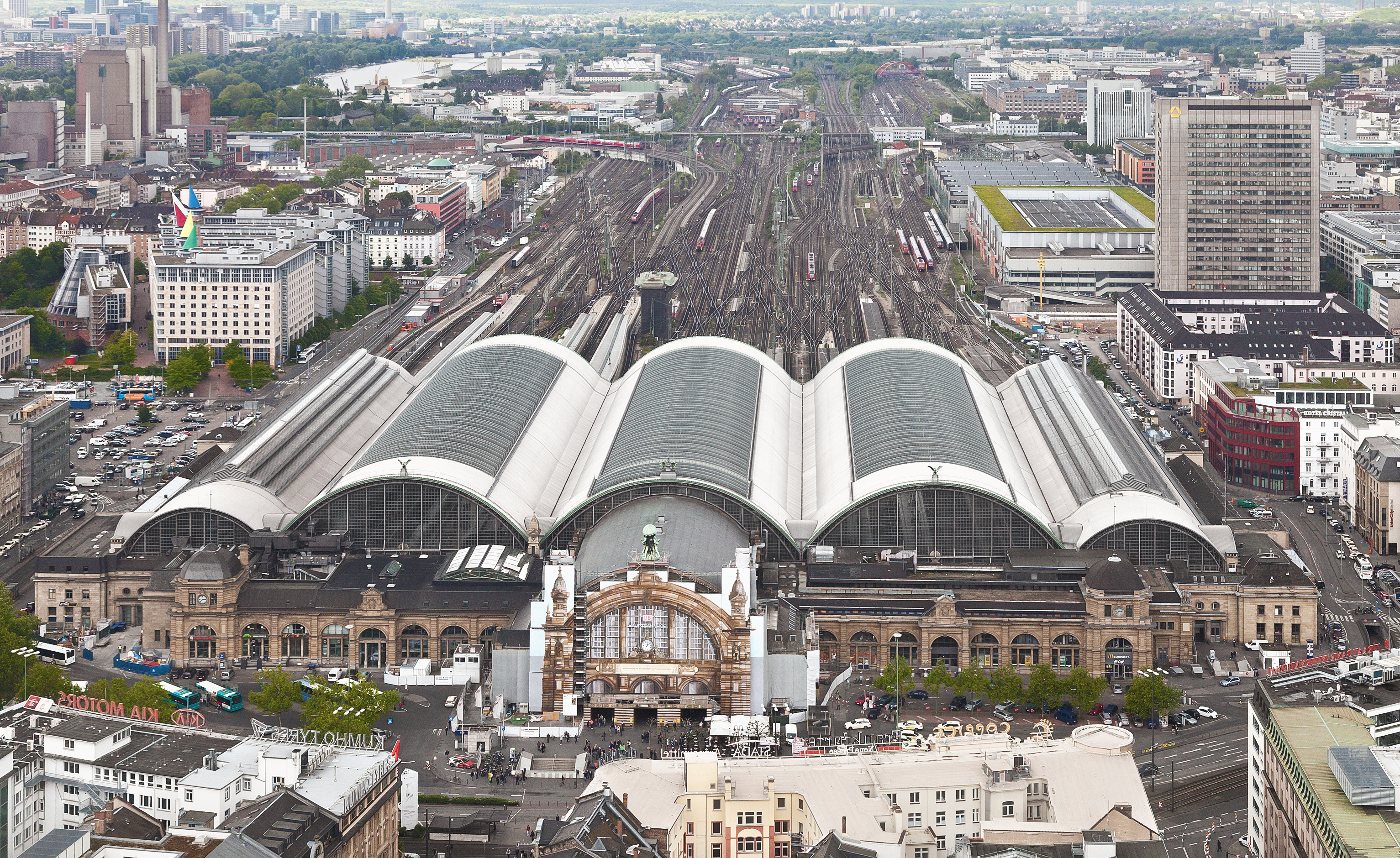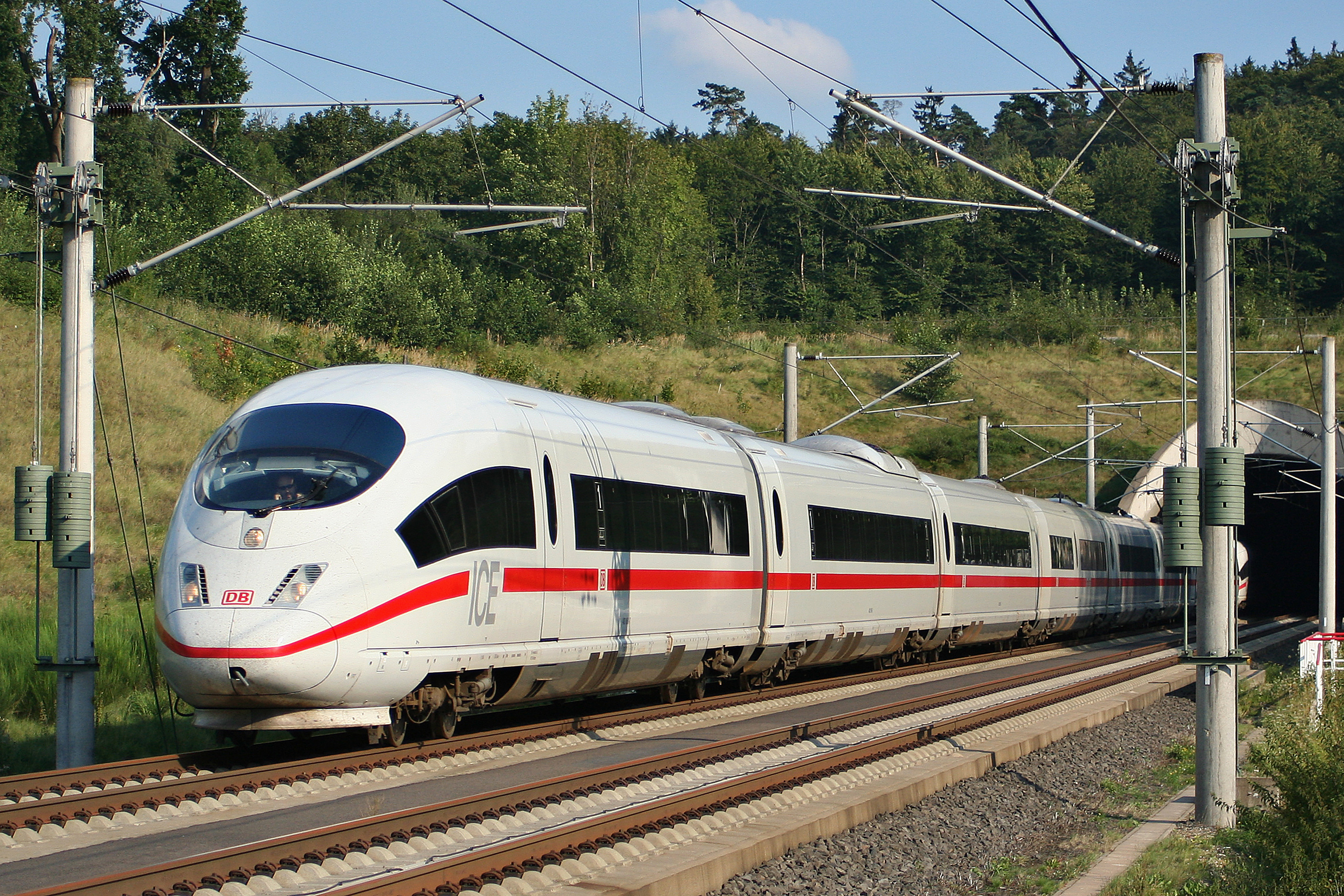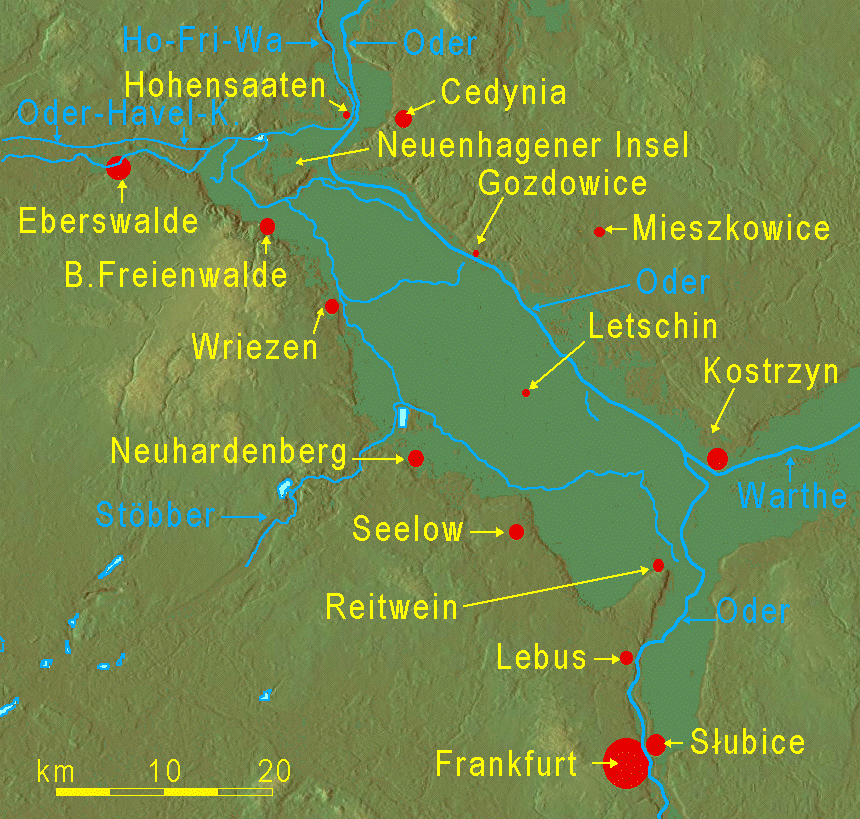|
Fürstenwalde (Spree) Station
Fürstenwalde (Spree) station is the station of the city of Fürstenwalde/Spree in the German state of Brandenburg. It was opened on 23 October 1842 on the Berlin–Wrocław railway, Berlin-Frankfurt railway.Städtisches Museum Fürstenwalde: Sheet no. 7.2 "Eisenbahngeschichte" The station was then about one kilometre north of the town on Müncheberger Chaussee. The station building still exists and is one of the oldest in Germany. History The Berlin-Frankfurt Railway was opened for passenger services on 23 October 1842. Freight operations commenced on October 31 of that year. As of August 1845, the line was extended as part by the Berlin–Wrocław railway, Lower Silesian-Markish Railway (''Niederschlesisch-Märkische Eisenbahn-Gesellschaft'') to Wrocław (then Breslau), completed in 1846. The station was established west of the Müncheberger Chaussee, which as a result was renamed Eisenbahnstraße (“railway street”) between the town and the station. It was about one kil ... [...More Info...] [...Related Items...] OR: [Wikipedia] [Google] [Baidu] |
Verkehrsverbund Berlin-Brandenburg
The Verkehrsverbund Berlin-Brandenburg (VBB) is a transport association run by public transport providers in the German states of Berlin and Brandenburg. It is a private limited company owned jointly by the states of Berlin and Brandenburg (with one third each) and the 18 districts and district-free cities of Brandenburg with 1.85% each. It was founded on 30 December 1996. VBB claims to be one of the largest transport associations in Europe based on the area covered of 30,367 km2 with nearly 6 million inhabitants. Common ticketing was launched on 1 April 1999. The 2005 number of passengers transported was 1.23 billion, with 3.37 million passengers per day. Lines in the VBB Many lines are operated under the VBB fare structure. This includes all local traffic in Berlin, such as the Berlin S-Bahn and Berlin U-Bahn, as well as all regional train services, most of them RegionalExpress and RegionalBahn lines. There are also several trolleybus and ferry lines within the VBB ... [...More Info...] [...Related Items...] OR: [Wikipedia] [Google] [Baidu] |
Berlin S-Bahn
The Berlin S-Bahn () is a rapid transit railway system that services the reigon in and around Berlin, the capital city of Germany. It has been in operation under the name since December 1930, having been previously called the special tariff area ('Berlin city, orbital, and suburban railways'). It complements the Berlin U-Bahn and is the link to many outer-Berlin areas, such as Berlin Brandenburg Airport. As such, the Berlin S-Bahn blends elements of a commuter rail service and a rapid transit system. In its first decades of operation, the trains were steam-drawn; even after the railway electrification system, electrification of large parts of the network, some lines remained under steam. Today, the term ''S-Bahn'' is used in Berlin only for those lines and trains with Third rail, third-rail electrical power transmission and the special Berlin S-Bahn loading gauge. The third unique technical feature of the Berlin S-Bahn, the automated mechanical train control (works very similar ... [...More Info...] [...Related Items...] OR: [Wikipedia] [Google] [Baidu] |
Potsdam Hauptbahnhof
Potsdam Hauptbahnhof is the main station in the German city of Potsdam, capital of the state of Brandenburg. It lies on the Berlin–Magdeburg railway and was founded in 1838. However, it has had this name only since 1999. It was originally called ''Bahnhof Potsdam'' (Potsdam station) and it was called ''Potsdam Stadt'' (city) station from 1960. The station is the terminus of line S7 of the Berlin S-Bahn, which comes from Ahrensfelde. It is also connected with the central bus station, which is a transfer point between Potsdam and the southwestern region of Berlin, and has a stop on the Potsdam tram network. It is classified by Deutsche Bahn as a category 2 station. History The first railway from Berlin to Potsdam was opened on 22 September 1838. It was the first railway in Prussia and is now one of the oldest railways in Germany still in operation. Its final stop was at the site of the current Potsdam station. From the station, a port track ran to a steam boat landing west ... [...More Info...] [...Related Items...] OR: [Wikipedia] [Google] [Baidu] |
Brandenburg Hauptbahnhof
Brandenburg Hauptbahnhof is the main railway station in the town of Brandenburg an der Havel in the German state of Brandenburg. It lies on the Berlin–Magdeburg railway at the junction with the Brandenburg Towns Railway. It has largely lost its former major role for long-distance passenger services and freight traffic, but it continues to serve regional traffic. A water tower on the site of the former freight yard and a plaque commemorating French forced labourers at the station buildings are heritage-listed. The station was renamed ''Brandenburg Hauptbahnhof'' at the end of World War II, previously it had been called ''Brandenburg Rb'' (Rb for Deutsche Reichsbahn) station.Various timetables It is classified by Deutsche Bahn as a category 3 station. Location The station is located at the kilometre 61.3 point of the Berlin–Magdeburg railway (calculated from the former Berlin Potsdamer Bahnhof), which runs in an approximately east–west direction. The route of the Brandenbur ... [...More Info...] [...Related Items...] OR: [Wikipedia] [Google] [Baidu] |
Magdeburg Hauptbahnhof
Magdeburg Hauptbahnhof (German for Magdeburg main station, sometimes translated as Magdeburg Central Station) is the main railway station in the city of Magdeburg in the northern part of the German state of Saxony-Anhalt. Importance The station is the main station of Magdeburg and along with Halle (Saale) Hauptbahnhof, Halle Hauptbahnhof the centre of long-distance rail transport in Saxony-Anhalt. It is also connected to the Magdeburg S-Bahn network and the HarzElbeExpress regional rail network. History The current main station is built on the site of the western side of the former Magdeburg Fortress. Several competing railway companies had built lines to Magdeburg between 1839 and 1849, each with their own stations. They were built on the west bank of the Elbe river, on reclaimed land. With the increasing industrialisation and growing importance of Magdeburg, the need for space at stations grew. A central station, however, was not feasible at first. As the existing railway fa ... [...More Info...] [...Related Items...] OR: [Wikipedia] [Google] [Baidu] |
Regional-Express
In Germany, Luxembourg and Austria, the Regional-Express (; RE, or in Austria: REX) is a type of regional train. It is similar to a semi-fast train, with a top speed of and an average speed of about as it calls at fewer stations than ''Regionalbahn'' (in Austria: '' Regionalzug'') or S-Bahn trains, but stops more often than ''Intercity'' or ''Intercity Express'' services. Operations The first Regional-Express services were operated by DB Regio, though since the liberalisation of the German rail market (''Bahnreform'') in the 1990s many operators have received franchise rights on lines from the federal states. Some private operators currently operate trains that are similar to a Regional-Express service, but have decided to use their own names for the sake of brand awareness instead. Regional-Express services are carried out with a variety of vehicles such as DMUs (of Class 612), EMUs (of Class 425 or 426) or, most commonly, electric or diesel locomotives with doub ... [...More Info...] [...Related Items...] OR: [Wikipedia] [Google] [Baidu] |
German Railway Station Categories
The approximately 5,400 railway stations in Germany that are owned and operated by the subsidiary DB InfraGO are divided into seven categories, denoting the service level available at the station. This categorisation influences the amount of money railway companies need to pay to DB Station&Service for using the facilities at the stations. Categories Category 1 The 21 stations in Category 1 are considered traffic hubs. They are permanently staffed and carry all sorts of railway-related facilities, as well as usually featuring a shopping mall in the station. Many are the main station ( or ''Hbf'') of larger cities. However, some are located in smaller cities, such as Karlsruhe Hauptbahnhof, and are regarded as important because they are at the junction of important railway lines. Berlin, Hamburg, Munich and Cologne, the four biggest cities in Germany, have more than one Category 1 station. Included in this category are the following stations: *Berlin-Gesundbrunnen stati ... [...More Info...] [...Related Items...] OR: [Wikipedia] [Google] [Baidu] |
Deutsche Bahn
(, ; abbreviated as DB or DB AG ) is the national railway company of Germany, and a state-owned enterprise under the control of the German government. Headquartered in the Bahntower in Berlin, it is a joint-stock company ( AG). DB was founded after the merger between Deutsche Bundesbahn and the East German Deutsche Reichsbahn in 1994 after the unification of Germany and has been operating ever since. is the second-largest transport company in Germany, after the German postal and logistics company / DHL. DB provides both long-distance and regional transport, serving around 132 million long distance passengers and 1.6 billion regional passengers in 2022. In 2022, DB transported 222 million tons of cargo. Company profile The group is divided into several companies, including '' DB Fernverkehr'' (long-distance passenger), '' DB Regio'' (local passenger services) and '' DB Cargo'' (rail freight). The Group subsidiary '' DB InfraGO'' also operates large parts of the German ... [...More Info...] [...Related Items...] OR: [Wikipedia] [Google] [Baidu] |
Bad Saarow
Bad Saarow (, ; 1950–2002: Bad Saarow-Pieskow) is a Municipalities of Germany, municipality in the Oder-Spree district, in Brandenburg, Germany. The place is known for its hot springs and for its mineral-rich mud. Their healing properties have attracted visitors for many years, and in 1923 led to the town's name Spa town, acquiring the prefix ''Bad'' ("bath", "spa"). Nearby are the Dubrower Berge, a range of wooded hills popular with hikers and cyclists. History From 1815 to 1947, Bad Saarow was part of the Prussia, Prussian Province of Brandenburg, from 1947 to 1952 of the State of Brandenburg, from 1952 to 1990 of the Bezirk Frankfurt of East Germany and since 1990 again of Brandenburg. Demography Sons and daughters of the town * Jörg Schönbohm (1937−2019, born in Neu Golm), former Lieutenant general of the Bundeswehr, 1999−2009 Minister of the Interior of the State of Brandenburg * Cornelia Ernst (born 1956), politician (The Left (Germany), The Left) * Ma ... [...More Info...] [...Related Items...] OR: [Wikipedia] [Google] [Baidu] |
Seelow
Seelow () is a German town, seat of the Märkisch-Oderland, a district of Brandenburg. As of 2013 its population was of 5,464. Geography It is situated in the extreme east of Germany, 70 km (40 miles) east of Berlin, 16 km (10 miles) west of the border with Poland. History The village appears in the records held in 1252 by Archbishop Wilbrand of Magdeburg. At that time, listed as ''Villa Zelou'', it was included in the property of the formerly Polish Bishopric of Lebus (Lubusz Land), contested between the Magdeburg archbishops and the Ascanian margraves of Brandenburg. Seelow suffered damaging town fires in 1630, 1788 and again in 1809. From 1816 Seelow was included for administrative purposes in the , a subdivision of the Frankfurt Region within the Prussian Province of Brandenburg. In 1863 the district council office was relocated to Seelow and in 1950 "Lebus district" was renamed "Seelow district"; following frontier changes agreed with the Soviet Union in 194 ... [...More Info...] [...Related Items...] OR: [Wikipedia] [Google] [Baidu] |
Oderbruch Railway
The Oderbruch () is a landscape located at the Oder river in eastern Germany on the Polish border, with a small part also in Poland. It extends from the towns Oderberg and Bad Freienwalde in the north to Lebus in the south, in the county of Märkisch-Oderland in the state of Brandenburg. The Oderbruch is about 60 km long and its width varies from 12 to 20 km for a total area of some 920 km2. It is a slightly inclined plane descending from 14 m in the southeast to just one meter above sea level in the northwest. The German name Oderbruch comes from Middle High German ''brouch'' meaning a marshy ground, swamp or moor (''bruch'' is related to the English term brook), while the Polish name refers to Bad Freienwalde. The Prussian king Frederick the Great initiated the drainage of the Oderbruch in order to bring this large tract of marshland under cultivation. Since that time the land west of the river has been river polder, whereas the 17% of the Oderbruch which is now in ... [...More Info...] [...Related Items...] OR: [Wikipedia] [Google] [Baidu] |
Beeskow
Beeskow (; , ;) is a town in Brandenburg, in eastern Germany, and capital of the Oder-Spree district. It is situated on the river Spree (river), Spree, 30 km southwest of Frankfurt an der Oder. History In 1518 the town was purchased by the Diocese of Lubusz, and it was the place of death of the last bishop in 1555. The town was a fief of the Kingdom of Bohemia until 1742, when it was annexed by the Kingdom of Prussia. From 1815 to 1947, it was part of the Province of Brandenburg. One of the main escape routes for insurgents of the unsuccessful Polish November Uprising from partitioned Poland to the Great Emigration led through the town. After World War II, Beeskow was incorporated into the State of Brandenburg from 1947 to 1952 and the Bezirk Frankfurt of East Germany from 1952 to 1990. Since 1990, Beeskow is again part of Brandenburg. Demography File:Bevölkerungsentwicklung Beeskow.pdf, Development of Population since 1875 within the Current Boundaries (Blue Line: Popula ... [...More Info...] [...Related Items...] OR: [Wikipedia] [Google] [Baidu] |






